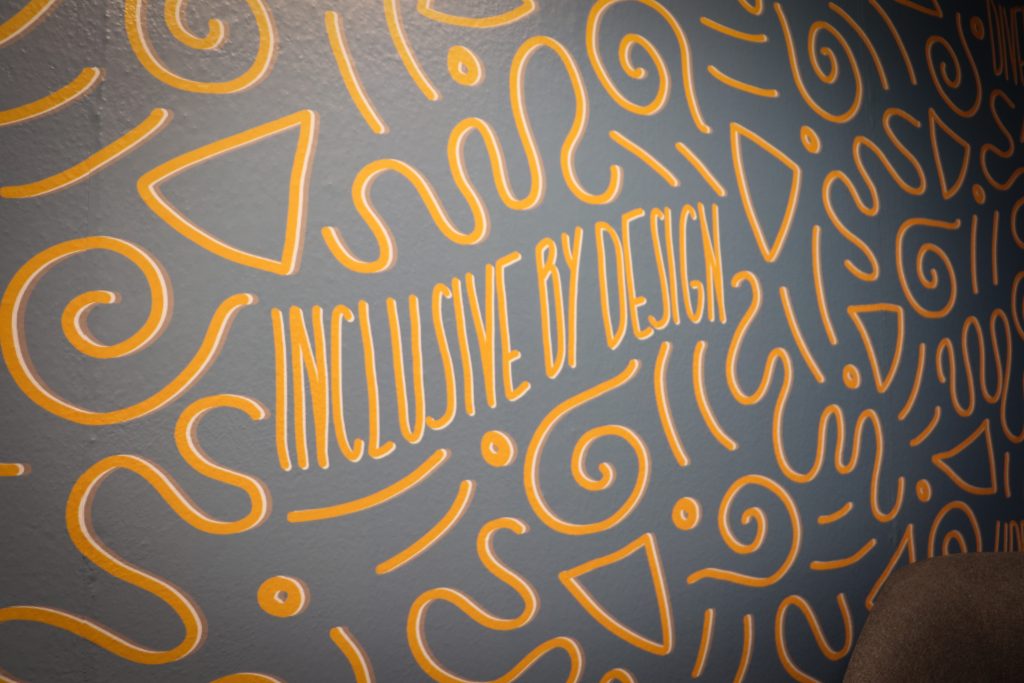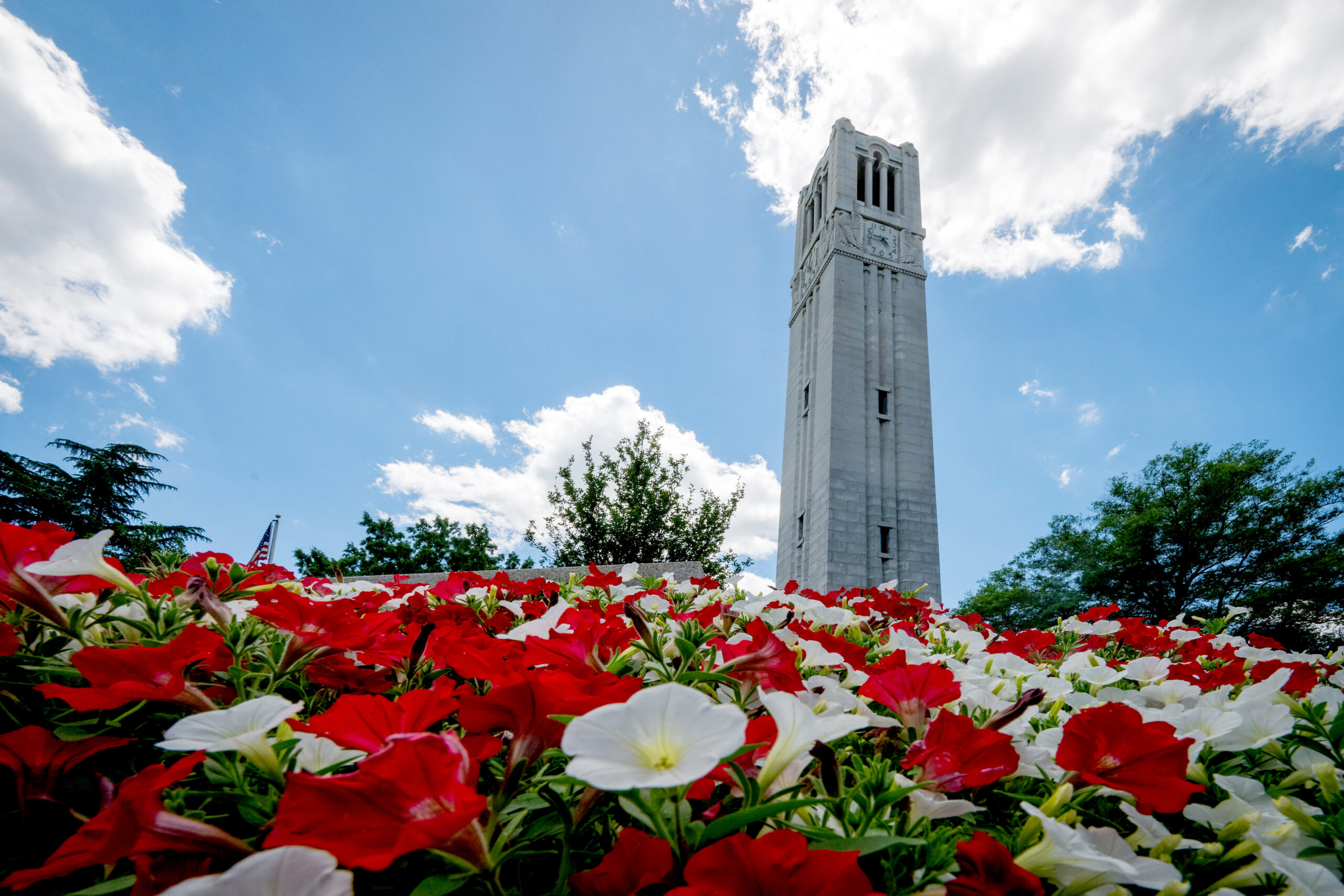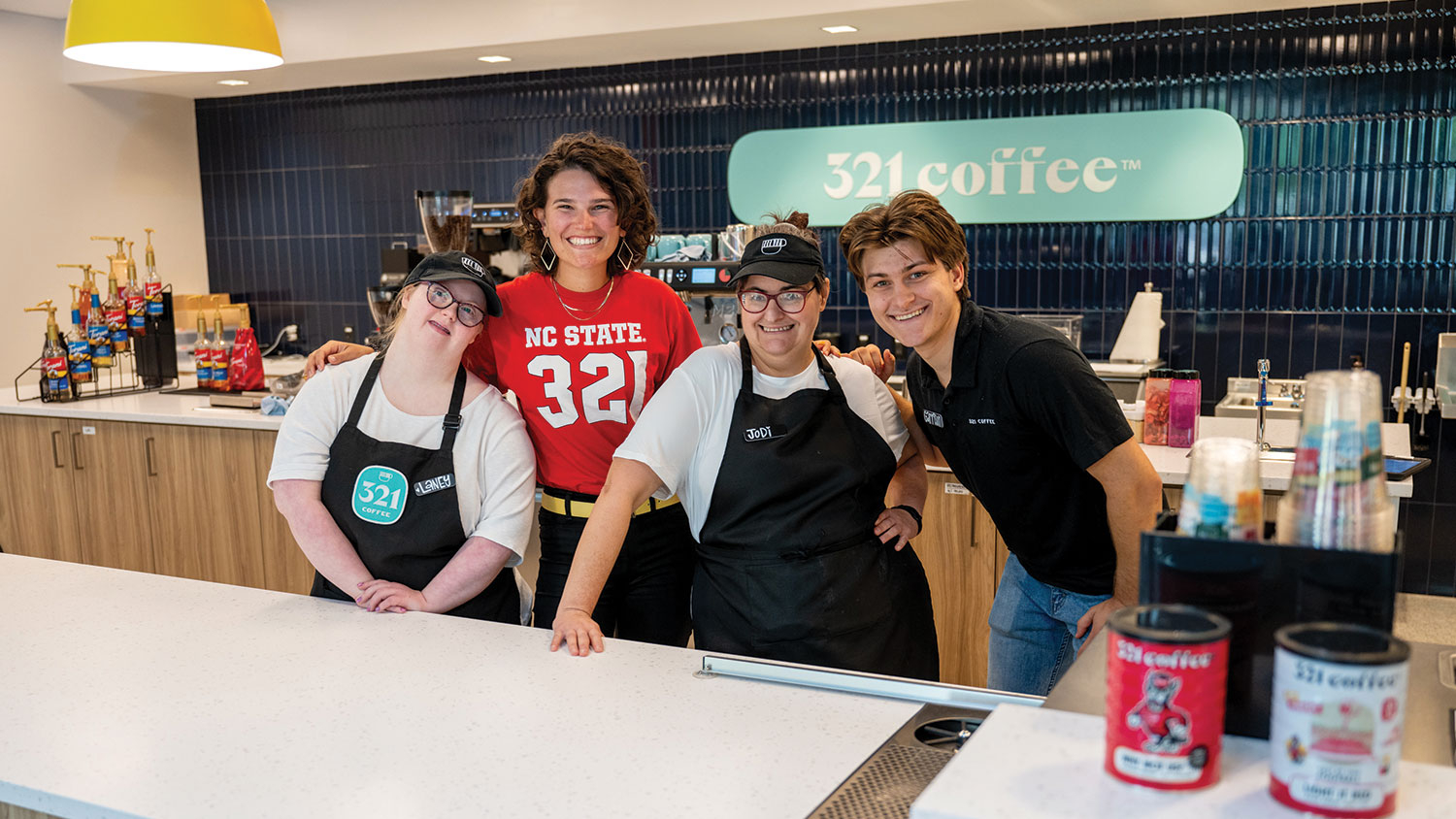Inclusive by Design
Take a virtual tour across spaces in Nelson Hall that celebrate diversity and inclusion, including a new Diversity and Inclusion Hub.

By Kevin Brewer, University Communications Contributing Writer
When Tayah Butler put on her protective mask and walked around downtown Raleigh last summer — a season of the coronavirus and social unrest — she took pictures of the murals that grew out of the city’s protests: pain turned into paint, wounds turned into art.
“How do I send the message to our students that they were being heard?” said Butler, director of diversity and inclusion in the Poole College of Management. “I wanted to incorporate the Black Lives Matter movement, the cries for justice that have been going on for a long time.”
The answers to Butler’s question have taken visible form on the first three floors of Nelson Hall: a diversity and inclusion workspace for students on the first floor, a land acknowledgement board on the main floor and, most notably, an inclusive mural on the third floor that touches on all the issues on Butler’s mind.
First Stop: Diversity and Inclusion Hub
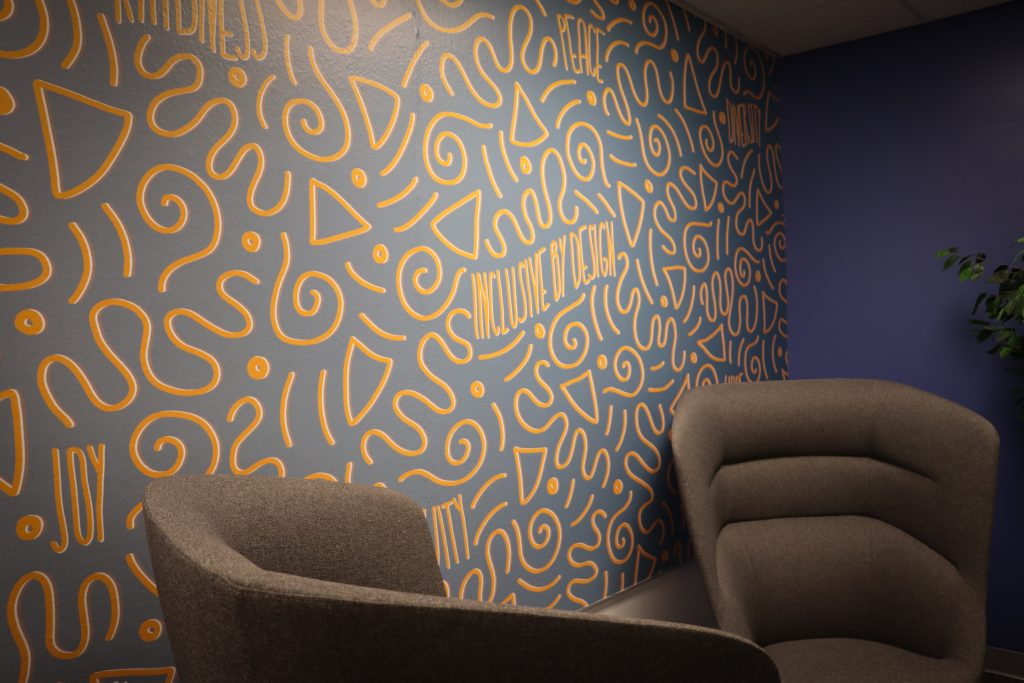
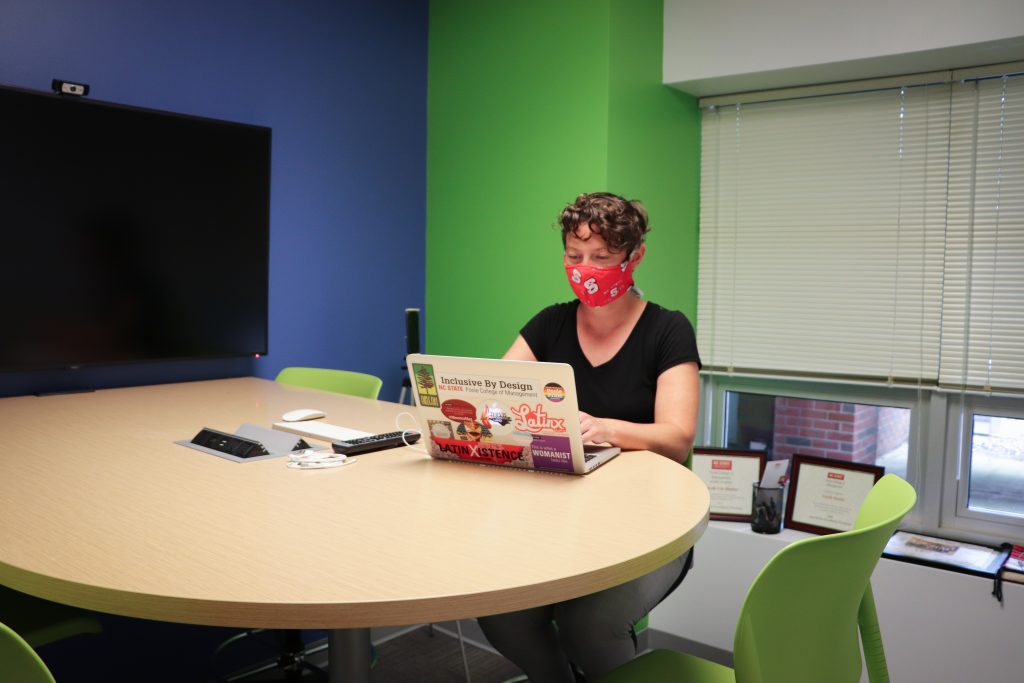
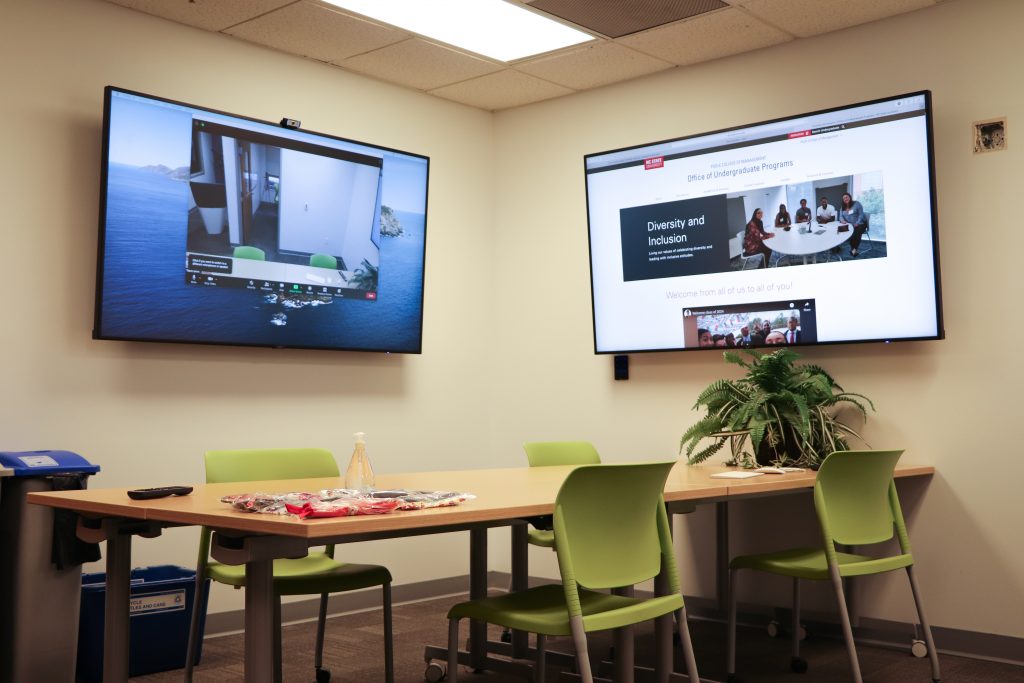
The glass entrance to Nelson 1215 —Poole College’s new diversity and inclusion collaborative hub — features a mural designed by Florida artist Stephanie Melissa Dorsainvil. Amid orange doodles on a gray background, the mural reads: “INCLUSIVE BY DESIGN.” Spread out among the doodles are words such as “kindness,” “joy” and “equity.”
“What drew me to her work … it kind of looked like how you doodle in a college notebook,” Butler said. “It made sense.”
Inside the workspace, there is a meeting table for four students, with two wall-mounted monitors for in-person or Zoom meetings. There are also 15 storage lockers for students.
While fall undergrad classes are online only because of COVID-19, Nelson 1215 is open to students — four or fewer at a time.
“Long before COVID and social distancing, we had the need to do a lot of virtual collaboration,” Butler said. “We collaborate with student groups that are on campus and with off-campus companies. We can have three or four projects going at the same time.”
Second Stop: Land Acknowledgment Board
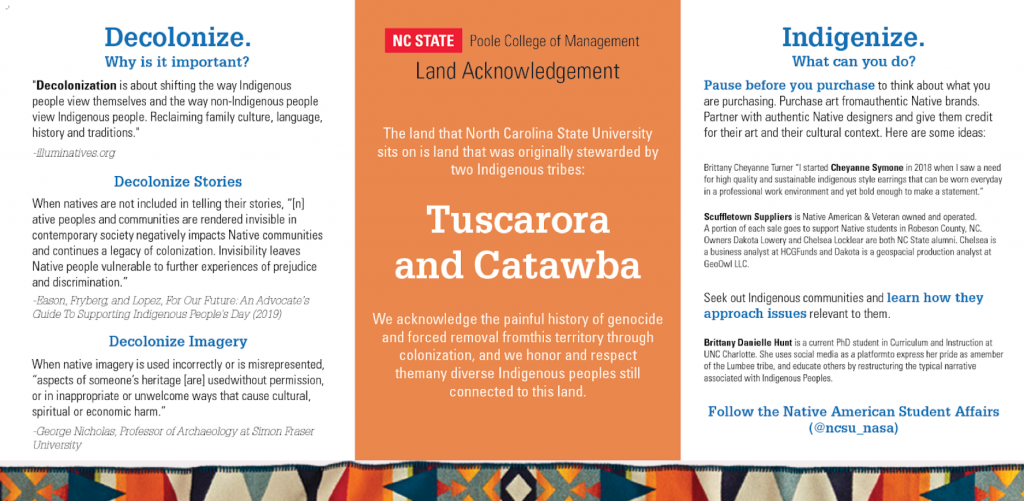
On the main floor, right outside Port City Java and next to the dean’s office, is a wall plaque presenting a land acknowledgment statement — a public statement of principle that has become a common feature in diversity and inclusion circles.
It says: “We acknowledge the painful history of genocide and forced removal from this territory through colonization, and we honor and respect the many diverse Indigenous peoples still connected to this land.”
Butler worked on the statement with a team of students, reducing it to a simple, evergreen message. It was then approved by Dean Frank Buckless.
“It acknowledges the wrongs of the past and does not make the people of that land mythological or invisible,” she said. “They are still alive. They are still among us.”
Third Stop: Diversity Mural
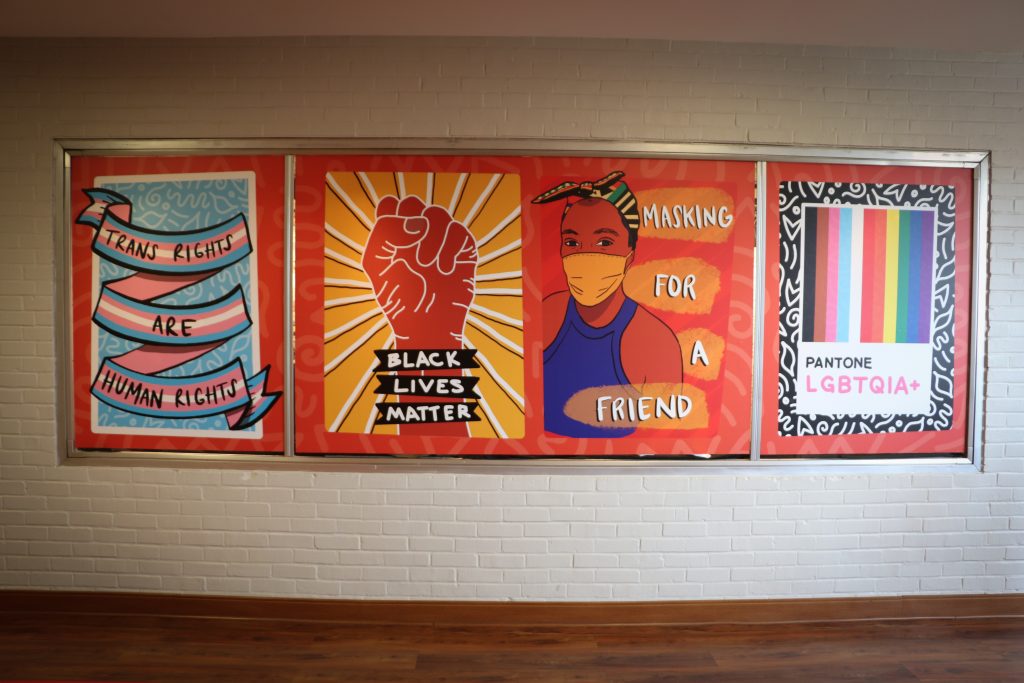

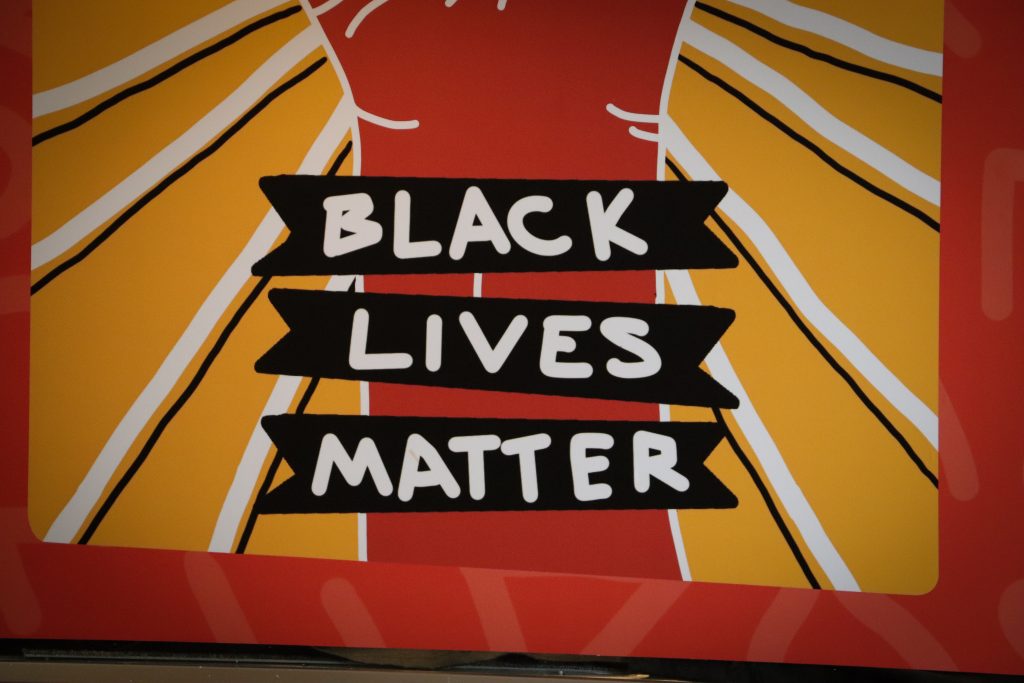
Dorsainvil also produced the mural on the third floor, a series of four posters addressing four diversity topics: transgender rights, Black Lives Matter, the current pandemic and LGBTQIA+ rights.
The mural is about 20 feet long and 5 feet tall, and it covers the glass over an old display case beside Nelson Hall Auditorium.
“When I got to Poole four years ago, it was a very dusty, old case,” said Butler, who helps curate displays in the case that align with various heritage months. “But it is prime real estate. It’s where all the important meetings happen.”
Butler wanted a mural to represent the current fight for social justice during a pandemic, so she asked GLBT center director Jonathan McCorey for help. He put Butler in touch with Dorsainvil, and the project took off from there.
Q&A: Stephanie Melissa Dorsainvil
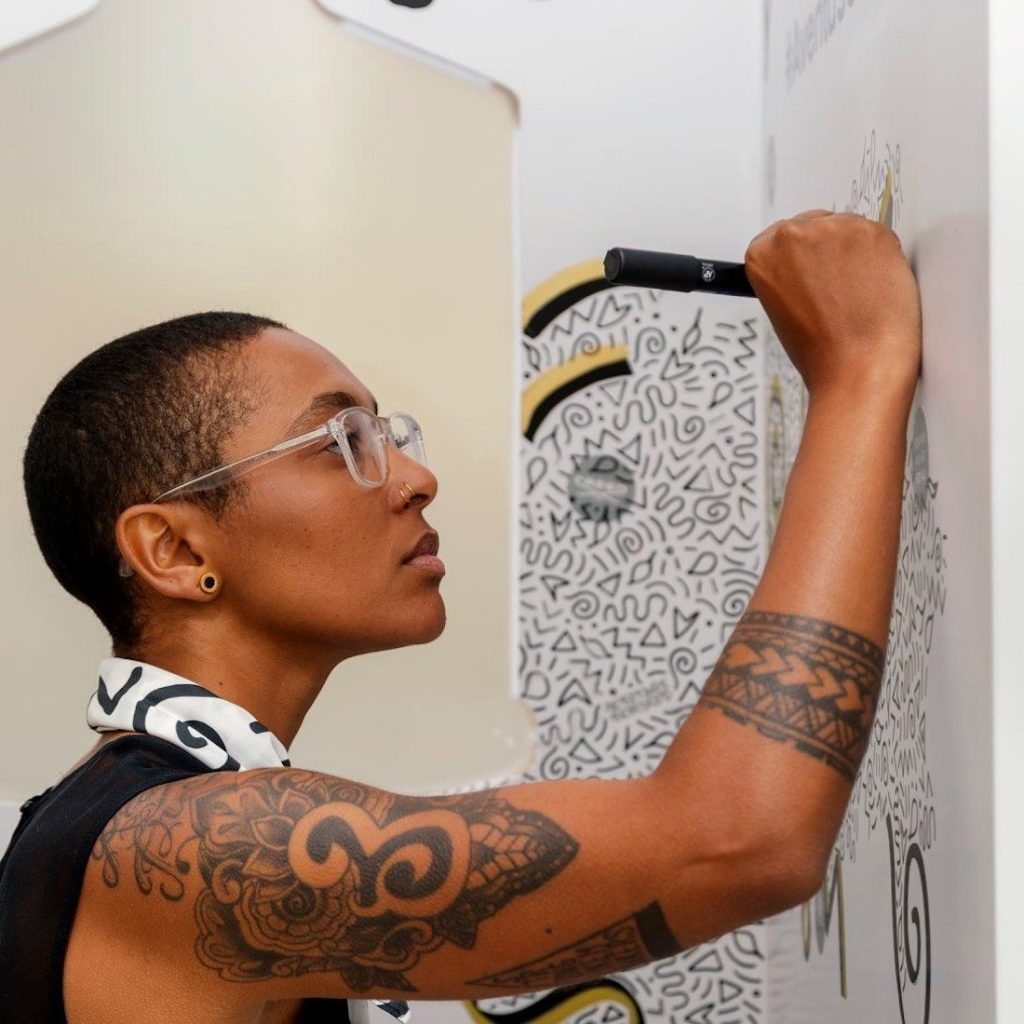
Stephanie Melissa Dorsainvil is a first-generation Haitian American visual artist who has painted more than 20 commissioned murals. She is based in south Florida.
How did you come up with the idea of your doodle-inspired style?
My work is inspired by my love for abstract art. I love to relieve the mind of typical imagery and/or words to create something simple yet visually appealing.
Is it important that you make art that advances social change?
It is. I am very inspired by other artists who make that a main part of their practice. I don’t typically include social change messages, but in today’s world, with all that’s happening, I think it’s very important for us to all show up and use our individual talents to stand up and voice our concerns.
What do you hope people take away from your mural?
I hope they feel seen. I hope they feel connected. Like when you connect with a stranger on something. That almost overwhelming feeling of being understood and validated. I hope it encourages people to think outside of themselves as well. To try to see things from a different perspective if they don’t share the same views.
